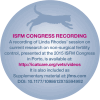No surgery required: the future of feline sterilization: An overview of the Michelson Prize & Grants in Reproductive Biology
- PMID: 26323802
- PMCID: PMC11148980
- DOI: 10.1177/1098612X15594992
No surgery required: the future of feline sterilization: An overview of the Michelson Prize & Grants in Reproductive Biology
Abstract
Overview: For many years, researchers have been studying reproduction of cats and dogs, including approaches to non-surgical sterilization, but scant funding has been available for this work. Recognizing the need to fund research and to attract researchers from the biomedical community to apply their expertise to this area, the Michelson Prize & Grants (MPG) in Reproductive Biology program was founded. Since 2009, it has funded 34 research projects in seven countries toward discovery of a safe single-administration lifetime non-surgical sterilant in male and female cats and dogs.
Goal: The goal of the MPG program is the reduction or elimination of the approximately 2.7 million deaths of healthy shelter cats and dogs in the US every year. The successful product is expected to be a single-dose injectable product approved by the US Food and Drug Administration as a veterinary prescription item. The most optimistic prediction is that such a product will reach the hands of practicing veterinarians within the next decade.
Areas of research: Active research is in progress using approaches such as immunocontraception with a single-administration vaccine against gonadotropin releasing hormone (GnRH). Long-term therapy with GnRH agonists such as deslorelin administered in controlled-release devices is also being studied. Other scientists are targeting cells in the brain or gonads with cytotoxins, such as are used in cancer chemotherapy. Gene therapy expressing proteins that suppress reproduction and gene silencing of peptides essential to reproduction are further avenues of research. Findings are available at www.michelsonprizeandgrants.org/michelson-grants/research-findings.
© The Author(s) 2015.
Conflict of interest statement
The authors have no conflict of interest to declare.
Similar articles
-
New approaches to non-surgical sterilization for dogs and cats: Opportunities and challenges.Reprod Domest Anim. 2017 Apr;52 Suppl 2:327-331. doi: 10.1111/rda.12862. Epub 2016 Nov 28. Reprod Domest Anim. 2017. PMID: 27892642
-
Non-surgical methods of contraception and sterilization.Theriogenology. 2006 Aug;66(3):514-25. doi: 10.1016/j.theriogenology.2006.04.014. Epub 2006 Jun 6. Theriogenology. 2006. PMID: 16757019 Review.
-
Clinical use of GnRH agonists in canine and feline species.Reprod Domest Anim. 2011 Apr;46(2):344-53. doi: 10.1111/j.1439-0531.2010.01705.x. Epub 2010 Oct 21. Reprod Domest Anim. 2011. PMID: 20964727 Review.
-
Progress in development of immunocontraceptive vaccines for permanent non-surgical sterilization of cats and dogs.Reprod Domest Anim. 2012 Aug;47 Suppl 4:223-7. doi: 10.1111/j.1439-0531.2012.02079.x. Reprod Domest Anim. 2012. PMID: 22827374 Review.
-
Contraception in Dogs and Cats.Vet Clin North Am Small Anim Pract. 2018 Jul;48(4):733-742. doi: 10.1016/j.cvsm.2018.02.014. Epub 2018 Apr 21. Vet Clin North Am Small Anim Pract. 2018. PMID: 29685519 Review.
Cited by
-
Contraceptive implants used by cat breeders in France: a study of 140 purebred cats.J Feline Med Surg. 2020 Oct;22(10):984-992. doi: 10.1177/1098612X19901023. Epub 2020 Feb 21. J Feline Med Surg. 2020. PMID: 32081074 Free PMC article.
-
Progestins to control feline reproduction: Historical abuse of high doses and potentially safe use of low doses.J Feline Med Surg. 2015 Sep;17(9):743-52. doi: 10.1177/1098612X15594987. J Feline Med Surg. 2015. PMID: 26323797 Free PMC article. Review.
-
Efficacy and Safety of 4.7 mg Deslorelin Acetate Implants as a Neutering Option in Male Cats: A Large-Scale Multicentre Randomised Controlled Study.Animals (Basel). 2023 Jan 22;13(3):379. doi: 10.3390/ani13030379. Animals (Basel). 2023. PMID: 36766268 Free PMC article.
-
Outdoor cats - or community cats?Can Vet J. 2019 Apr;60(4):349-352. Can Vet J. 2019. PMID: 30992590 Free PMC article. No abstract available.
References
-
- American Society for the Prevention of Cruelty to Animals (ASPCA). Pet statistics. ASPCA frequently asked questions. https://www.aspca.org/about-us/faq/pet-statistics (2014, accessed October 22, 2014).
-
- Alliance for Contraception in Cats & Dogs (ACC&D). Contraception and fertility control in dogs and cats: a report of the Alliance for Contraception in Cats & Dogs (ACC&D). http://www.acc-d.org/resource-library/e-book (2013, accessed October 22, 2014).
-
- Journal of Zoo and Wildlife Medicine: Special Issue on Wildlife Contraception, 2013; 44 (4s).
-
- Enright WJ, Swift PJ. GnRH immunization of peripubertal male cats: dose titration of a GnRH-gly-cys-ovalbumin (GnRHOVAL) conjugate on immune and testicular responses [abstract]. J Reprod Fertil Abstr Ser 1995; 15: 15.
-
- Jung MJ, Moon YC, Cho IH, et al. . Induction of castration by immunization of male dogs with recombinant gonadotropin releasing hormone (GnRH)–canine distemper virus (CDV) T helper cell epitope p35. J Vet Sci 2005; 6: 21–24. - PubMed
Publication types
MeSH terms
LinkOut - more resources
Full Text Sources
Other Literature Sources
Research Materials
Miscellaneous




